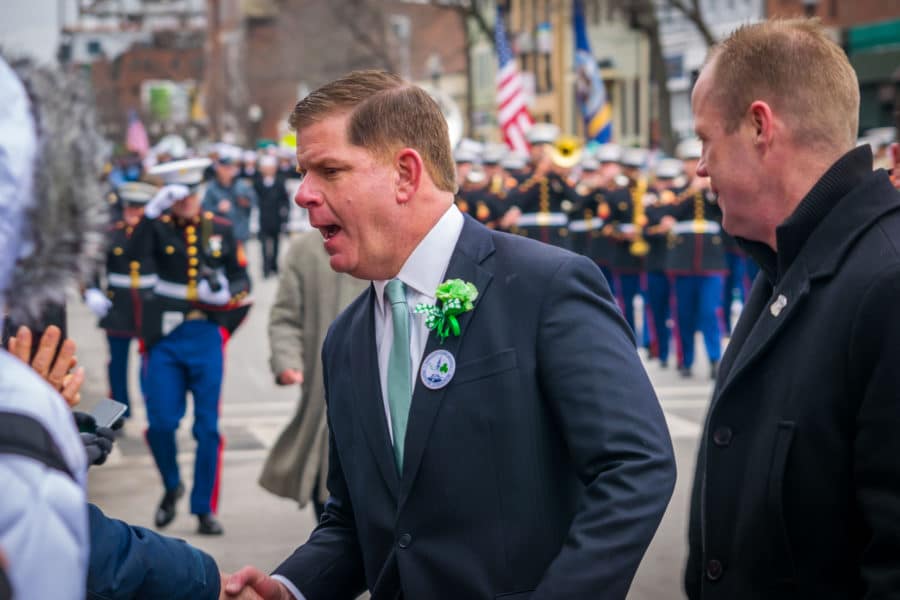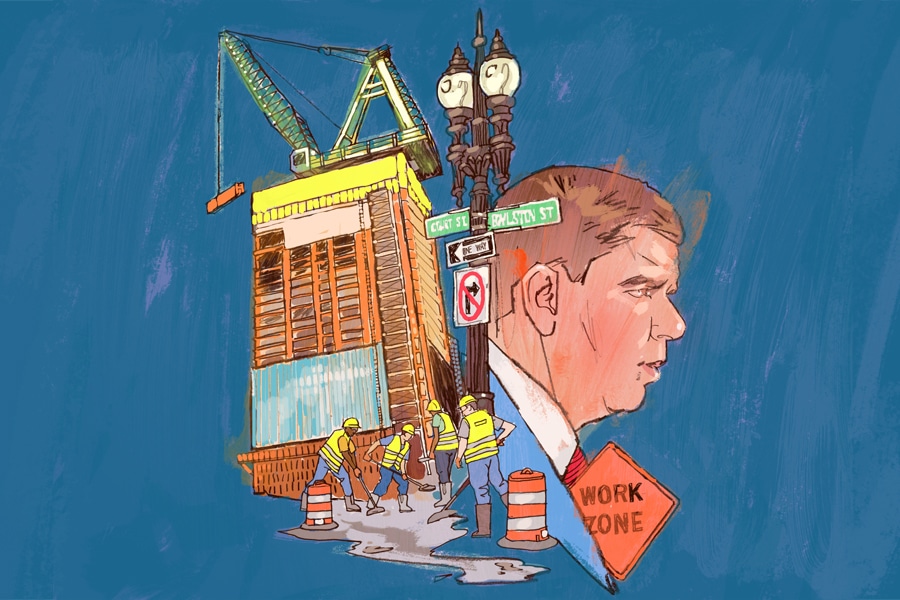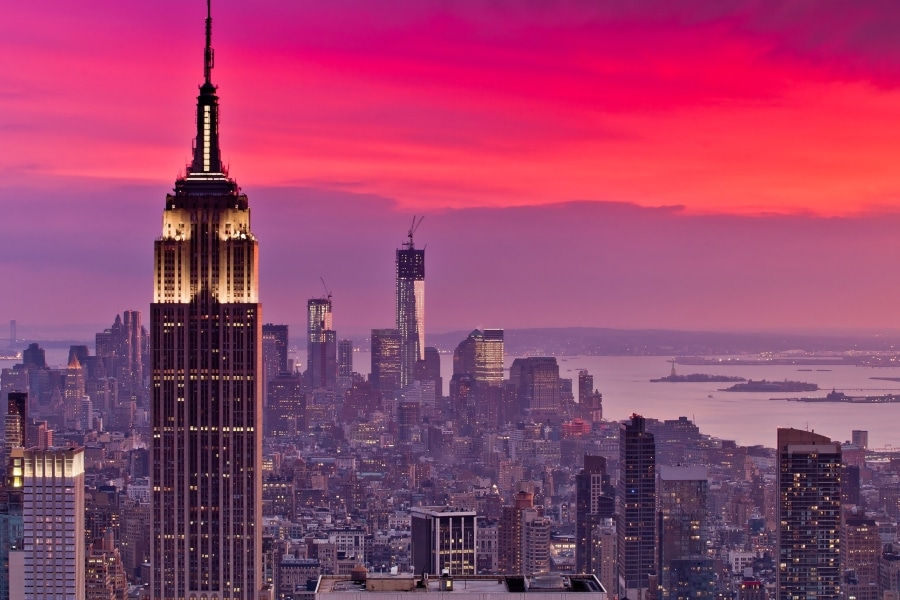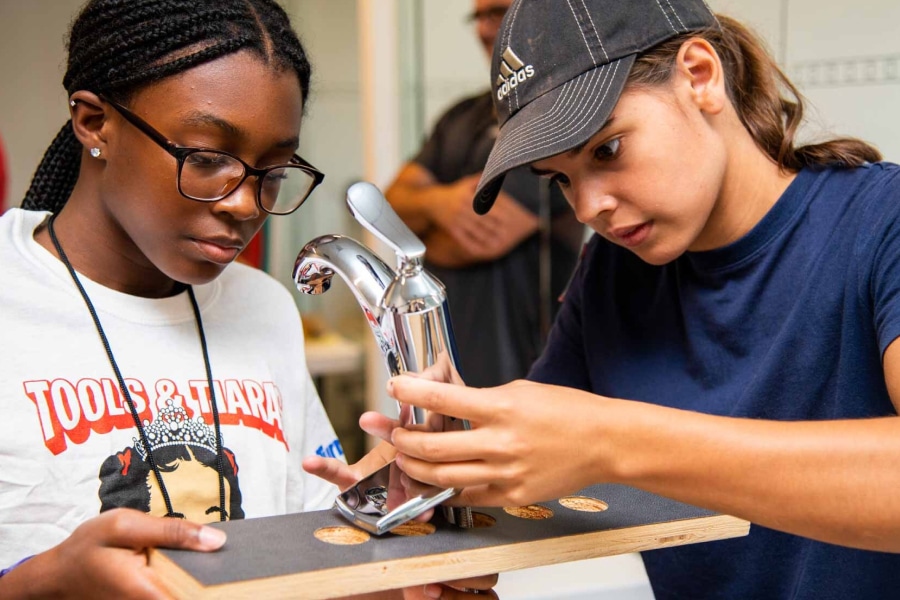Illustration by Jonny Ruzzo
The United States secretary of labor once wore a hard hat.
Marty Walsh, the former mayor of Boston who recently took over as labor secretary in President Joe Biden’s administration, started his career working on rough-and-tumble construction jobsites along Boston’s waterfront.
Walsh helped build the city’s booming waterfront as a laborer, an experience with backbreaking work that he never forgot and often spoke of on the campaign trail as a candidate for political office.
It’s also a background that has made Walsh somewhat unusual in the ranks of public servants, with the typical career ladder starting in law or local politics, not on the construction jobsite.
As Boston’s mayor, Walsh approved tens of millions of square feet of new condos, apartments, offices and shops throughout the city. Unlike many other major cities, Boston is on a growth trajectory, expected to hit roughly 724,000 residents by 2030 from just under 700,000 today.
The boom has shattered records and thrust Boston near the top of the national charts in construction starts behind only Washington, D.C., and New York.
What’s more, last spring Walsh, who declined to be interviewed for this article, grabbed national headlines for his aggressive efforts to stop the spread of COVID-19, becoming the first big city mayor to shut down construction until safety plans and PPE could be put into place.
“He is definitely a unique case for a mayor of a large metropolitan city in the United States,” Andrew DeAngelo, director of public affairs at the Greater Boston Plumbing Contractors Association, said in an interview with Built before Walsh’s nomination as labor secretary was announced. “He has an incredible in-depth knowledge and understanding of the construction industry. He can certainly see it through the lens of a laborer.”
Rough start
The son of Irish immigrants who survived a bout of cancer as a child, Walsh went to work in construction as a laborer after dropping out of college.
Following in the footsteps of his father John, Walsh joined Laborers Local 223 in Boston’s Dorchester neighborhood in 1988 at age 21.
One of his first jobs was on the construction crew working on the World Trade Center, a new office and conference center under construction on the city’s waterfront.
Walsh did a little bit of everything, from building scaffolding and bracing masonry walls to mixing plaster and clearing debris.
The World Trade Center was one of a number of big projects that had begun to reshape Boston, as the once-tired port city underwent a renaissance, with a new neighborhood called the Seaport just starting to emerge from a backwater of rotting piers and windswept parking lots.
After a few years in the trenches, Walsh went to work for Local 223 in its benefits fund office.
However, still in his 20s, Walsh was forced to come to grips with another deadly disease, alcoholism, in a battle that would change his life in far-reaching ways.
Walsh, who has publicly spoken often and openly about his struggles with drinking, later recalled being arrested and getting thrown out of Boston Bruins hockey games.
The final straw came in April 1995, when Walsh said he came off a “three-day bender.” He dragged himself into work, and his boss at the Laborers local all but ordered him to call the number for a detox center.
“I just wanted to make him happy and get the heat off,” Walsh recalled.
Instead, his time at a rehab facility on Cape Cod proved to be an epiphany about his drinking and his life.
“Labor gave my immigrant family a chance,” Walsh recalled in a speech at the 2016 Democratic National Convention. “And the labor community got me the help I needed and gave me a second chance.”
Rising up
Walsh joined Alcoholics Anonymous and threw himself into the recovery program, attending meetings and working with others just starting to get sober.
Armed with his newfound sobriety, Walsh ran successfully for state representative in 1997, beating out several other candidates and eventually serving at the State House for 17 years.
Walsh also steadily rose through the union ranks, becoming president of Local 223 and then head of the Boston Building Trades Council in 2011, representing 35,000 construction workers.
Along the way, he attended night school, earning a degree from Boston College.
As the union trades council’s chief, Walsh earned a reputation as a pragmatic pitchman, not a table banger, making the case to contractors and construction firms on why they should hire the workers in the union locals he represented.
One developer building an apartment complex in downtown Boston feared a backlash after going with a non-union subcontractor to install the HVAC system.

The contractor’s bid had come $400,000 below its union competitors, but Walsh was mystified when he strode into the room. Instead of delivering a tongue-lashing, he pointed out the bottom-line reality.
“Walsh looked at his guys and said, ‘What do you expect them to do? It’s $400,000,’” Carl Valeri, president and chief operating officer of the Hamilton Co., told The Boston Globe. “And that was it. He came in. He listened.”
Along with negotiating deals with contractors, Walsh also launched in 2011 a pre-apprenticeship program, Building Pathways, aimed at preparing women and minority workers for apprenticeships and eventual jobs in the construction trades. The program to date counts almost 400 graduates.
“He has a lot on his plate, but he never loses sight of where he came from,” said Mary Vogel, the program’s executive director.
From hard hat to mayor
In 2013, Walsh faced a crucial juncture in his life and career.
Thomas M. Menino, Boston’s longest serving mayor, announced plans to retire after a record two decades in office, setting up a scramble among potential successors.
Walsh began dreaming of becoming mayor when he was just 11 years old, but he faced skepticism over his construction union background.
[SEE ALSO: Will the Biden Administration Revive Home Geothermal? This Startup Thinks So.]
With a distinctive shock of red hair, since mellowed with age, the outgoing and amiable Walsh gabbed relentlessly with voters, putting to use political skills perfected in union halls and bargaining sessions with contractors.
Driven by enthusiastic backing from members of various recovery programs as well as construction unions, Walsh edged out his opponent, attorney and now former City Councilor John Connolly, in a tough campaign, before proceeding to put the anxieties of the city’s business leaders to rest.
The former construction worker and union leader presided over one of the nation’s most intensive building booms, with Boston officials having signed off on plans for 77 million square feet of new development since Walsh took office seven years ago.
It’s a number that includes 40,000 new condos and apartments, in addition to tens of millions of square feet in new commercial space, from offices to labs.
In the first half of 2019, construction starts in Boston—from new offices to shops and apartments—totaled $3.7 billion, edging out much larger Los Angeles, and ahead of Dallas, Miami, Philadelphia and Atlanta as well.
Only New York and Washington, D.C., ranked higher, according to Dodge Data & Analytics.
“Mayor Marty Walsh has overseen the greatest boom in real estate development in the city’s history,” David Begelfer, principal at CRE Strategic Advisors and former CEO of NAIOP Massachusetts, told Built in December 2020. “Certainly, coming from the building trades gave the mayor a solid understanding of the economics and politics of development.”
But the city’s hard-hat mayor also benefited from a ground-level-up understanding of construction and the risks workers face—an asset that supporters say shone through clearly in Walsh’s response to the outbreak of COVID-19 in March 2020.
On March 17, Walsh became the first mayor of a major U.S. city to shut down all but essential construction, such as sewer line work or urgent road repairs.
It would be another two weeks before New York City, hammered even harder by the initial wave of infections, took similar measures.
During the pause, Boston officials worked with contractors across the city, requiring new COVID-19 safety protocols—from PPE to temperature checks—before construction jobsites could reopen.
“It’s massive, massive,” said Walsh, shaking his head after being asked by a reporter at a press conference in front of Boston City Hall in March 2020 about how many construction workers would be affected. “We are the middle of a building boom in Boston right now.”
“It is a difficult decision to make,” Walsh added. “Construction is at the core of our economy here in Boston. This is something that is very personal to me and to a lot of us.”
Next Stop: Washington
Now, Boston’s former hard-hat mayor has made his biggest leap yet, into the high-stakes world of Washington politics.
Walsh is the first former construction worker to serve as labor secretary in nearly half a century, the last being Peter Brennan. Appointed in 1973 by President Richard Nixon, Brennan was a master painter who rose to become head of the New York Building and Construction Trades Council.
Walsh is also the third former construction trades worker to fill the post; Martin Durkin, head of the plumbers union, served briefly in President Dwight Eisenhower’s cabinet for seven months in 1953, the shortest tenure of any labor secretary.
“I think it’s great having a labor secretary who knows what it means to go to work building bridges and roads,” Mark Erlich, former executive secretary-treasurer of the New England Regional Council of Carpenters and a member of Boston’s zoning board, told Built. “He will make a powerful advocate.”












